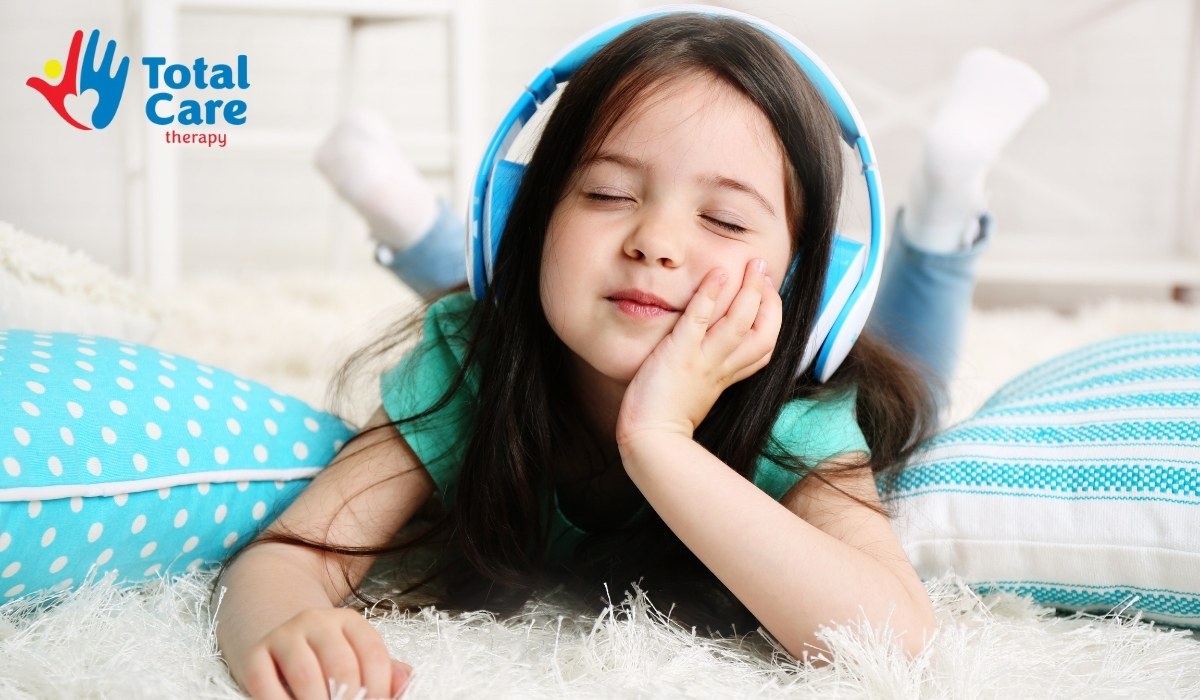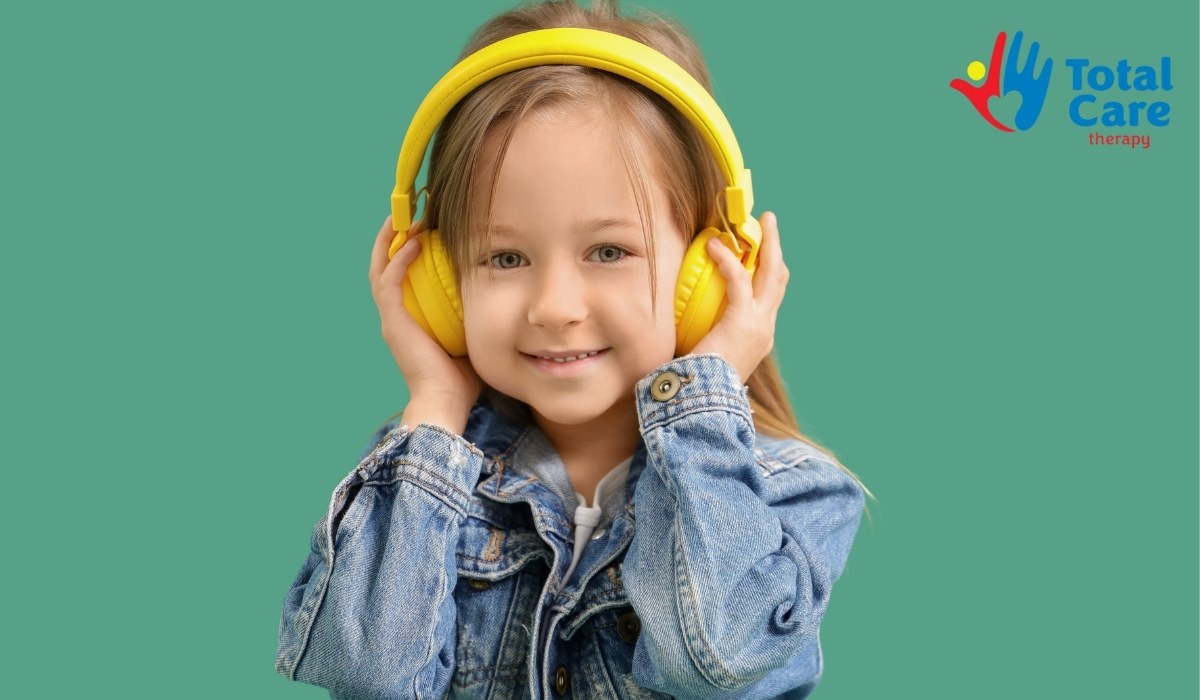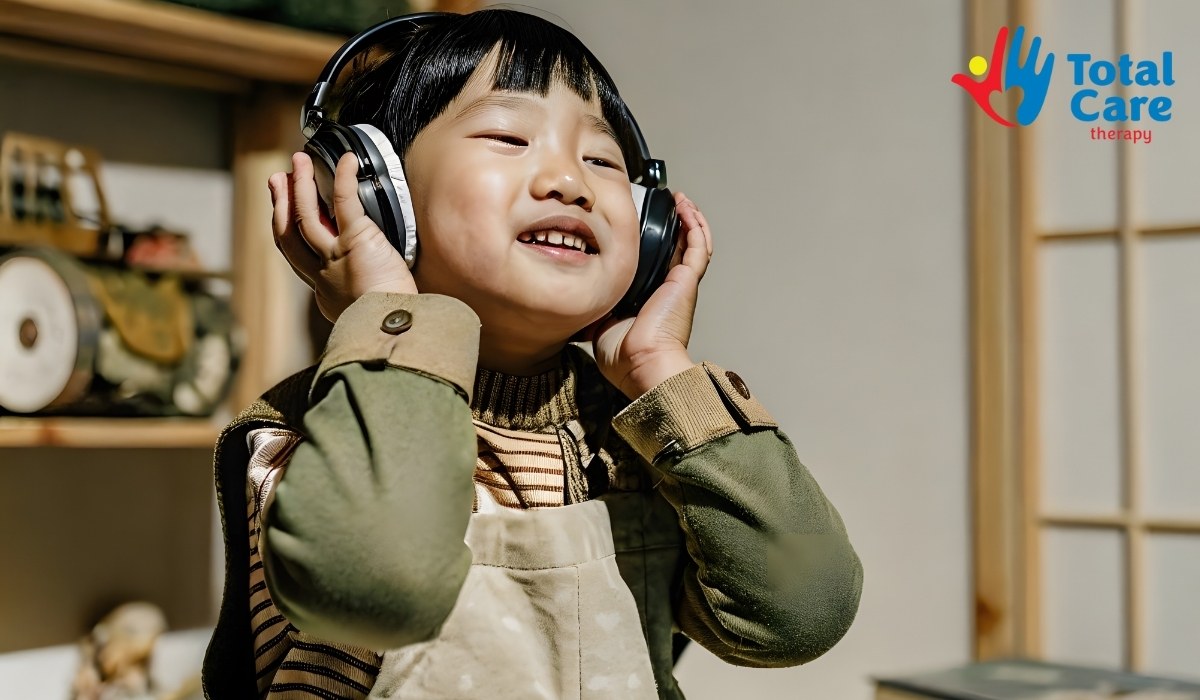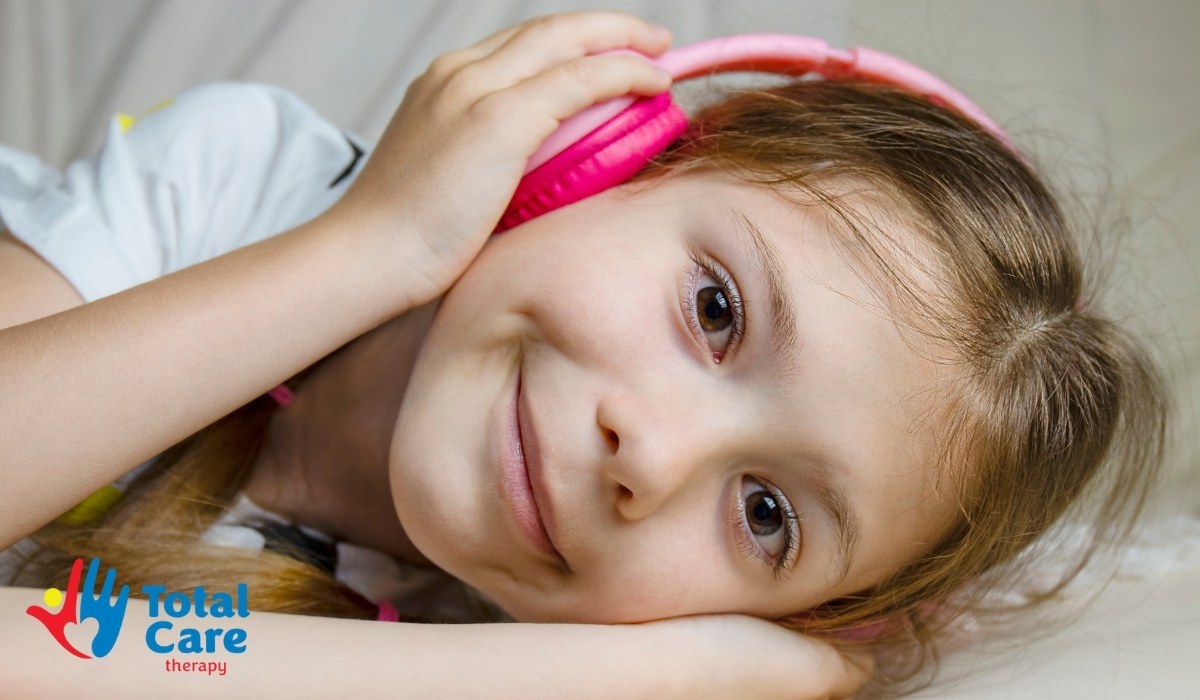Headphone for Autism: Are Noise-Canceling Ones Worth It?
Discover how noise-canceling headphones for autism can reduce sensory overload, improve focus, and support your child’s comfort every day.
Headphone for Autism: Are Noise-Canceling Ones Worth It?
Key Points:
- Noise-canceling headphones (especially active models) can help reduce sensory overload, calm auditory sensitivities, and improve attention for children with autism.
- There are trade-offs: they may block needed cues, cause ear pressure sensations, or risk overuse.
- Choosing the right features (comfort, volume limiters, adjustable ANC) and introducing usage gradually is critical.
- They can complement—not replace—therapeutic strategies (like ABA) that build tolerance to environmental stimuli.
If you’re a parent of a child on the autism spectrum, you may have seen them cover their ears, retreat from noisy places, or struggle in environments with unpredictable sound. Sensory overload—particularly from auditory input—is a common challenge. One tool many families explore is noise-canceling headphones.
But are they really worth it? Can they genuinely reduce sensory overload, help your child focus, and bring daily comfort? Or might they introduce new issues (like blocking awareness or causing dependence)? In this article, we’ll walk through what the research says, practical pros and cons, how to choose and use them wisely, and how they can fit into a broader therapy plan (such as with ABA).
Let’s dive in.
Are Noise-Canceling Ones Worth It?
Yes. Noise-canceling headphones are worth it, especially for children or individuals who are sensitive to sound. They help reduce overwhelming background noise, creating a calmer listening environment and allowing users to focus or relax without sensory overload.
While they may cost more than regular headphones, the comfort, protection, and improved concentration they provide often make the investment worthwhile—particularly for those who benefit from a quieter, more controlled auditory experience.
Why Many Children with Autism Benefit from Headphones
Before focusing on noise cancellation itself, it’s helpful to understand why some children on the autism spectrum gravitate toward wearing headphones at all.
- Auditory sensitivities/hyperacusis: Many autistic individuals experience sounds more intensely. Background hums, distant chatter, or mechanical noise (like HVACs) may feel overwhelming. Studies estimate that up to 90% of people with autism report some form of sensory processing differences.
- Emotional and physiological stress from noise: Loud or disorganized auditory input can trigger sympathetic (fight-or-flight) responses — increased heart rate, anxiety, irritability. A trial of noise-attenuating headphones found reduced physiological stress in children with ASD and hyperacusis.
- Behavioral distress or shutdowns: Overstimulation can lead to meltdowns, withdrawal, or refusal to engage. By giving the brain a “break” from excessive sound, headphones can serve as a coping strategy.
- Better focus and attention in noisy settings: In classrooms, therapy rooms, or public places, reducing background noise can allow more of the brain’s processing capacity to shift toward task-relevant stimuli (e.g., listening to a teacher, following directions) rather than filtering out chaos.
Given these potential benefits, it’s understandable why many families consider noise-canceling solutions. But not every model is ideal, and not every child will respond the same.

Understanding Noise Cancellation: Active vs Passive
To understand the promise and limits of noise-canceling headphones, we must distinguish two mechanisms: passive noise isolation vs active noise cancellation (ANC).
Passive Noise Isolation (also “passive noise cancellation” / “noise-isolating”)
This approach is simpler: good over-ear or in-ear headphones physically block or attenuate ambient sound via padding, foam, snug fit, or acoustic seal. They don’t require electronics or batteries. For mid- to high-frequency noises (conversations, clatter), they can help. But they are less effective at suppressing low-frequency, steady hums (like air conditioning, engine rumble).
Pros of passive models:
- Fewer electronics (less weight, fewer failures)
- No battery dependency
- Often more affordable
- Less risk of “pressure” sensations
Cons:
- Limited performance on low-frequency sounds
- May need a tighter, firmer seal, which some children find uncomfortable
Active Noise Cancellation (ANC)
ANC headphones use internal microphones to detect ambient noise, then generate an opposing “anti-noise” waveform to cancel (or reduce) that sound inside the ear cups. This is particularly effective for low-frequency, steady noises (e.g., hum of an HVAC, engine rumbles).
Pros of ANC:
- Superior reduction of low-frequency hums
- Can allow hearing audio/voice at lower volume (less risk to hearing)
- Often more powerful in “noisy but steady” environments (buses, open offices, airplanes)
Cons and caveats:
- Can cause pressure or “tinny” sensation (some users describe it as an “ear vacuum” feeling)
- Increased cost, weight, battery needs
- Less effective for sharp, sudden noise peaks (e.g., slamming doors, alarms)
- Audio hiss or minor artifacts in ANC circuits
- Total cancellation isn’t possible — important sounds (voices) may be partially masked
In practice, many headphone models combine passive isolation + ANC for best performance.
So, when we ask “Are noise-canceling ones worth it for autism?” the answer is often “yes, if chosen and used wisely.” But the precise choice (ANC vs passive) depends on your child’s sensitivity profile, environment, and tolerance.
The Benefits of Noise-Canceling Headphones for Autism
When properly selected and used, noise-canceling (especially those with ANC) can deliver measurable benefits for individuals with autism:
1. Reduced Sensory Overload
Noise-canceling headphones help minimize overwhelming background sounds such as traffic, chatter, or machinery. By lowering sensory input, they create a calmer environment that supports focus and emotional regulation.
2. Improved Concentration
With fewer distractions, individuals with autism can better concentrate on tasks like schoolwork, reading, or social interactions. The consistent sound control helps sustain attention in noisy or unpredictable settings.
3. Enhanced Comfort in Public Spaces
Wearing noise-canceling headphones can make public areas like malls or classrooms more tolerable. The reduced auditory input helps prevent meltdowns or shutdowns triggered by excessive noise.
4. Better Transitions and Adaptability
Noise-canceling headphones can be used during transitions—such as moving from a quiet home to a loud outdoor environment—to ease adjustment and reduce anxiety from sudden noise changes.
5. Support for Emotional Regulation
By offering a sense of control over auditory input, these headphones can promote self-regulation and decrease stress or agitation in overwhelming situations.
6. Increased Participation in Daily Activities
With reduced discomfort from sensory overload, individuals may engage more confidently in activities such as shopping, traveling, or attending social events.
7. Improved Sleep and Relaxation
Some individuals benefit from using noise-canceling headphones or similar devices to block disruptive nighttime sounds, improving sleep quality and overall relaxation.

Key Risks, Drawbacks & Precautions
While the advantages are compelling, we must also consider potential downsides and guard against over-reliance.
1. Masking Relevant Environmental Cues
If a child is wearing noise-canceling headphones, they may miss important auditory signals: calls of “watch out,” alarms, teacher instructions, or social cues like someone entering the room. Especially in public or open settings, this can be a safety concern.
To mitigate:
- Use selective times for headphone use (class, therapy, travel)
- Use transparency/ambient modes when the environment requires awareness
- Pair with visual cues (e.g., teacher uses gestures)
2. Overuse and Dependency
There’s a risk the child may become dependent on the headphones for any environment, avoiding natural adaptation or desensitization. If every outing requires ANC, they might struggle when they can’t wear them.
Good practice: gradually fade usage, build tolerance to moderate sound, and use them as a tool—not a permanent crutch.
3. Auditory Development Concerns
Some audiologists warn that excessive headphone use, especially in ANC mode, could impact auditory processing, especially in developing brains. The fear is that by filtering out background sound, the brain may “unlearn” to sift ambient noise naturally and could weaken skills in distinguishing speech in noisy environments (related to auditory processing disorder, APD).
While evidence is not definitive, moderation and periodic “listening training” (without ANC) may reduce risk.
4. Physical Comfort Issues
ANC circuitry adds weight and bulk. Some users feel a pressure or “pop” sensation when ANC is switched on. Ear discomfort, poor fit, or heat may be problems for children with tactile sensitivities.
5. Battery Failure, Cost, Maintenance
ANC models require power (batteries or recharge). If the power runs out unexpectedly, you may lose the effect mid-activity. Also, higher-end models cost more, and repairs or battery replacement may be costly.

Choosing the Right Noise-Canceling Headphones for Autism
To make sure you get real benefit, here’s what to look for. First, introduce this list with a brief framing: Not every headphone suits every child. Here’s a guide to what features and practical choices matter most when picking noise-canceling or noise-reducing headphones for a child with autism.
What to prioritize (features and specs):
Comfort and Fit
Look for headphones with soft, cushioned, and breathable earpads to prevent irritation during extended wear. A lightweight, adjustable headband ensures a secure but gentle fit, while over-ear designs typically provide better noise sealing and less pressure than on-ear styles. Choose materials that are kind to sensitive skin and hair to keep your child comfortable.
Volume Limiting and Safety Ceiling
A built-in volume limiter—ideally capped at 85 dB—helps protect your child’s hearing from excessive sound exposure. Caregivers should also have easy access to manual volume controls to maintain safe and consistent listening levels throughout use.
Adjustable ANC, Transparency, and Ambient Modes
Headphones with adjustable active noise cancellation (ANC) let you control how much background noise is reduced. Some models also include ambient or “pass-through” modes, allowing important environmental sounds—like voices or safety cues—to remain audible when needed.
Battery Life and Power Reliability
Reliable battery life is key, especially for long days or travel. Choose headphones that last at least eight hours per charge, with easy recharge options or replaceable batteries. A clear battery indicator helps you avoid sudden power loss during critical moments.
Durability and Ruggedness
Children’s headphones should be sturdy enough to handle everyday wear and tear. Look for reinforced hinges, tangle-resistant wires, and a solid, kid-proof build. A travel case also adds protection and makes transport easier.
Low Noise Artifacts and Hiss
High-quality audio engineering minimizes background hiss or static when ANC is active. Headphones should maintain a quiet background even when no music or sound is playing, ensuring a smoother sensory experience.
Lightweight Design
Weight matters—heavy headsets can cause neck fatigue or discomfort, especially for children sensitive to pressure. A lightweight frame helps maintain comfort and encourages consistent, calm use.
Safety and Compliance
Always verify that the headphones meet child-specific safety certifications. Models designed for younger users often comply with volume and material standards that reduce health and safety risks.
Ease of Use and Control
User-friendly controls make a big difference. Opt for models with simple buttons or switches for power, ANC, and volume—features that children can learn to manage independently while still being intuitive for caregivers.
Trialability and Returns
Since sensory preferences vary, select headphones that come with a flexible return policy or trial period. A warranty or responsive customer support is also valuable in case of damage, discomfort, or malfunction.
Environmental matches (where to use):
- At home or therapy room — All features can be used
- In transit or noisy commute — Full ANC benefits shine
- School / classroom — Use with caution (teacher support, transparency mode)
- Public places / malls — Use selectively, with possible safety concerns

How to Introduce Noise-Canceling Headphones to Your Child
A careful, gradual introduction plan can prevent resistance or misuse. Here’s a stepwise plan:
- Model first: Demonstrate, wear them yourself in calm contexts. Let your child see and explore them without sound.
- Pair with positive reinforcement: Use them during preferred, low-stress activities (watching a movie, quiet play). Reward wearing them (sticker, praise).
- Short duration trials: Start with 5–10 minutes, gradually extend as tolerance allows. Track comfort, feedback.
- Alternate quiet / no-ANC periods: Switch off ANC periodically so the child experiences ambient sound and doesn’t become overdependant.
- Use them strategically: Reserve for high-noise times i.e. therapy, travel, crowded places—not constant wear.
- Monitor reactions: Watch for signs of discomfort, disorientation, overreliance, or refusal to take them off.
- Fade use over time: As the child’s auditory tolerance improves (through therapy and exposure), gradually reduce dependence on the device.
When are Noise-Canceling Headphones Not the Right Solution?
Even if they seem promising, in some cases they aren’t ideal. Consider alternatives or complementary approaches if:
- The child rejects anything on the head or ears (tactile hypersensitivity).
- The environment is dynamic and safety cues are critical (e.g. traffic, outdoor play).
- You want the child to build coping skills for auditory stimuli (over-reliance might impair that).
- The child already struggles with auditory processing or distinguishing speech in noise (you may want supervised auditory therapy).
- You can’t reliably monitor volume or usage (risk of misuse).
In these scenarios, you might try noise-attenuating earmuffs, elastic acoustic earplugs, or gradual environmental desensitization under a therapist’s guidance.

Integrating Noise-Canceling Headphones into an ABA-Based Strategy
Headphones are a helpful tool, but they work best when integrated into a comprehensive intervention plan—such as Applied Behavior Analysis (ABA).
- In therapy sessions, noise-canceling headphones can reduce distractions and allow more consistent engagement (less behavioral drift due to auditory intrusion).
- They can serve as a mediator condition during desensitization protocols: begin with full attenuation, then gradually fade towards natural sound exposure as tolerance builds.
- A Board Certified Behavior Analyst (BCBA) can monitor the child’s response, schedule appropriate reinforcement, and balance headphone usage with goals of increasing tolerance to ambient sound.
- Over time, you may aim to generalize gains (focus, emotional regulation) even when the headphone is removed.
- Therapists can collect data (behavior, engagement, self-regulation) with and without headphones, adjusting conditions accordingly.
Total Care ABA, for instance, incorporates sensory accommodations like noise-mitigating tools into individualized programs. As your child develops, the goal is often to shift from reliance on external support to internal regulation.
Partnering with Total Care ABA for Your Child’s Sensory Growth
Noise-canceling headphones can offer real, day-to-day relief from auditory overload, helping children with autism maintain focus, regulate emotions, and engage more fully in learning and social environments. But they’re not a silver bullet. Choosing the right model, introducing it carefully, using it as a strategic tool (not full dependency), and pairing it with therapy are all crucial.
When headphones are used in isolation, without a plan to build underlying tolerance, the benefits may be limited or even counterproductive. That’s where a data-driven, individualized intervention comes in.
If you’re seeking a partner to help your child navigate sensory challenges, Total Care ABA offers ABA therapy designed to incorporate sensory accommodations, gradually reduce reliance on supportive tools like headphones, and teach adaptive coping skills. We take a holistic, client-centered approach, working with your child’s unique profile to promote independence and growth.
We are proud to offer ABA therapy in New Mexico, Tennessee, Indiana, Georgia, Arizona, North Carolina, Maine, and Utah.
Feel free to reach out to us to explore how we might support your child and family in their sensory journey — we’d be honored to be part of that path.








